4th International Conference Nanobiophysics: Fundamental and Applied Aspects, 1-4 October 2015, Kyiv, Ukraine
Nanodiamonds for drug delivery and other biomedical applications
O. Gogotsi1, Y. Gogotsi2, V. Mochalin2, Y. Zozulya1, B. Malinovskiy1, V. Zahorodna1, I. Uvarova3, H. Gogotsi3,
1 Materials Research Centre, 3 Akademika Krzhyzhanovs'koho St, Kyiv 03680, Ukraine, E-mail:
Этот e-mail адрес защищен от спам-ботов, для его просмотра у Вас должен быть включен Javascript
2 A. J. Drexel Nanomaterials Institute, and Department of Materials Science and Engineering, Drexel University, Philadelphia, PA 19104, USA, E-mail:
Этот e-mail адрес защищен от спам-ботов, для его просмотра у Вас должен быть включен Javascript
3 Frantsevich Institute for Problems of Materials Science of NASU, 3 Akademika Krzhyzhanovs'koho St, Kyiv 03680, Ukraine, E-mail:
Этот e-mail адрес защищен от спам-ботов, для его просмотра у Вас должен быть включен Javascript
Abstract
Carbon nanomaterials hold tremendous potential in addressing the two major issues faced by our society: providing energy and improving healthcare. Nanodiamond powder produced by detonation synthesis is one of the most promising carbon nanomaterials for drug delivery and theranostics [1], [2]. Diamond particles have a ~4-5 nm stable core and a large surface area with tailorable surface chemistry. Nanodiamonds have unique optical, mechanical and thermal properties. These properties have recently started to attract much interest for different biomedical applications [3]. Rich surface chemistry, nontoxicity and good biocompatibility of diamond nanoparticles make them attractive in biomaterial applications [4].
The development of new methods for obtaining free nanodiamond particles opens up new possibility for targeted drug-delivery systems that overcome cell membranes, various biological markers, systems intended for determination of the concentration of bioactive agents in living organisms, and others applications [5]. For tissue engineering scaffolds, the non-toxic fluorescent nanodiamond introduced into biodegradable polymers provides increased strength, visual monitoring, and enhanced biomineralization [6].
Nanodiamond (ND) particles are increasingly being utilized as diagnostic, imaging, and therapeutic agents in biomedicine [7]. In the area of biomedical imaging and diagnostics, luminescent nanodiamond with NV centers, as well as chemically modified fluorescent nanodiamond, hold tremendous potential to replace toxic semiconductor quantum dots, thus bringing this exciting potential application one step closer to the clinics [8]. Before nanodiamonds could be applied, they have to undergo multistage purification, characterization and surface modification. Various approaches of surface modification and functionalization of nanodiamond allow to enhance and control drug adsorption for prolongation of drug action and chemical binding of the drugs for sustained drug release for their further use as a drug delivery platform. As for drug delivery, this study mainly focuses on adsorption of antibiotics that will be discussed in detail. We demonstrate results of physical−chemical study of the adsorption of doxorubicin, polymyxin B and rifampicin on nanodiamonds.
References:
[1]. V. Mochalin, O. Shenderova, D. Ho, Y. Gogotsi The Properties and Applications of Nanodiamonds (Review), Nature Nanotechnology, 7 (1), p.11-23 (2012)
[2]. V. Mochalin, A. Pentecost, X.-M. Li, I. Neitzel, M. Nelson, C. Wei, T. He, F. Guo, Y. Gogotsi Adsorption of Drugs on Nanodiamond: Toward Development of a Drug Delivery Platform, Molecular Pharmaceutics, 10 (10), p.3728-3735 (2013)
[3]. O. Shenderova, D. Gruen, ed. Detonation Nanodiamonds: Science and Applications (2nd Edition), CRC Press (2014)
[4]. Q. Zhang, V. Mochalin, I. Neitzel, I. Knoke, J. Han, C. Klug, J. Zhou, P. Lelkes, Y. Gogotsi, Fluorescent PLLA-nanodiamond composites for bone tissue engineering, Biomaterials, 32 (1), p. 87-94 (2011)
[5]. A. Schrand, S. Hens, O. Shenderova Nanodiamond particles: properties and perspectives for bioapplications, Critical Reviews in Solid State and Materials Sciences, 34(1–2), p. 18–74 (2009)
[6]. Q. Zhang, V. Mochalin, I. Neitzel, K. Hazeli, J. Niu, A. Kontsos, J. G. Zhou, P. I. Lelkes, Y. Gogotsi Multifunctional Nanodiamond-PLLA Scaffolds for Bone Tissue Engineering: Enhanced Mechanical Strength and Biomineralization, Biomaterials, 33 (20), p.5067-5075 (2012)
[7]. V. Vaijayanthimala, D. Lee, S. Kim, A. Yen, D. Tsai, H.-C. Chang, O. Shenderova Nanodiamond-mediated drug delivery and imaging: challenges and opportunities, Expert Opinion on Drug Delivery 12 (6), p. 1-15 (2014)
[8]. G. Balasubramanian, A. Lazariev, S. R. Arumugam, et al. Nitrogen-Vacancy color center in diamond-emerging nanoscale applications in bioimaging and biosensing. Current Opinion in Chemical Biology 20, p. 69-77 (2014)
Download PDF version of Nanodiamonds for drug delivery and other biomedical applications
Here you can find Book of Abstract of the Conference NBP 2015






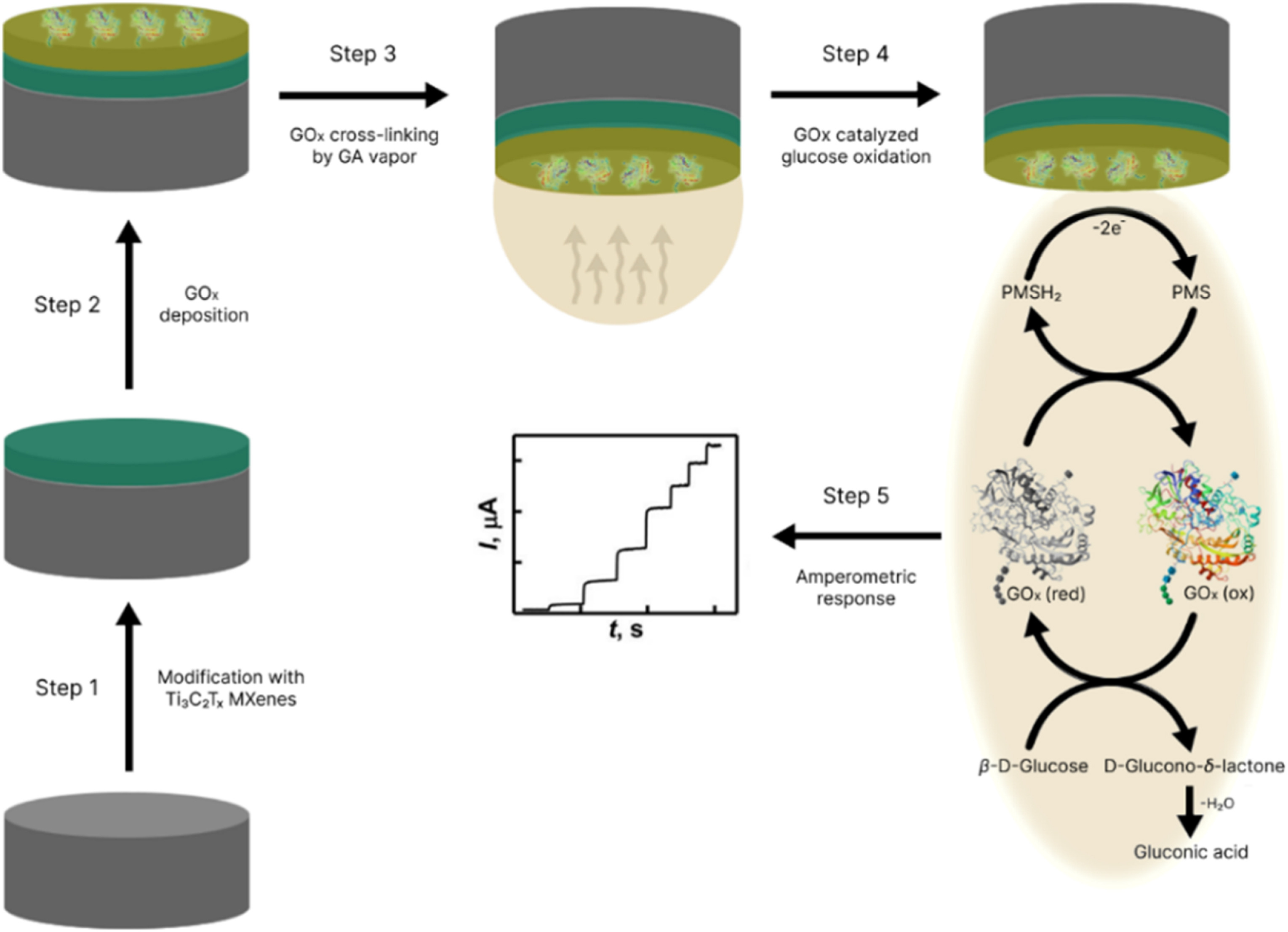
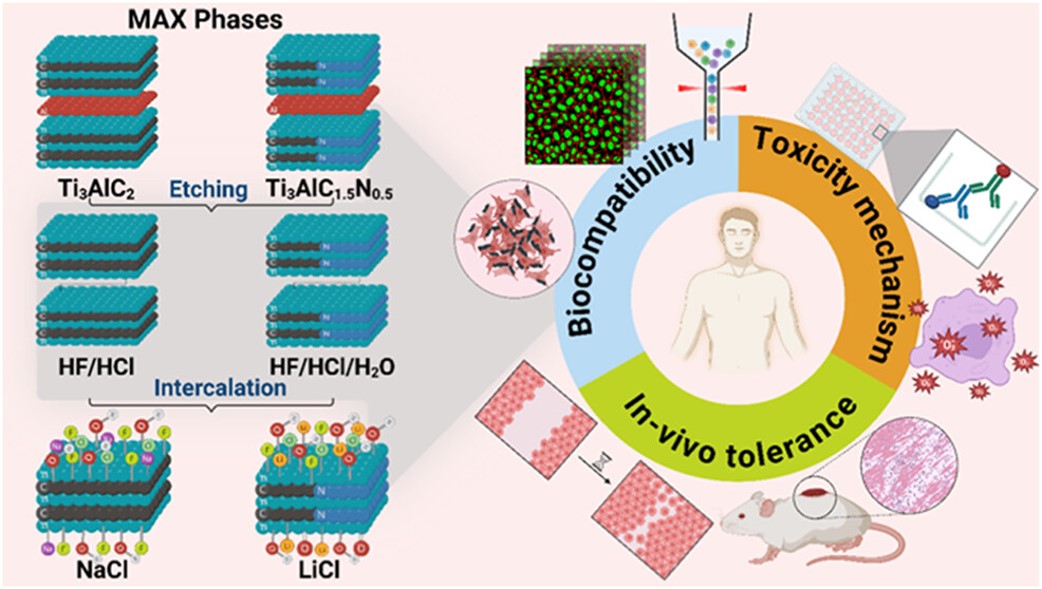 MXenes potential applications include sensors, wound healing materials, and drug delivery systems. A recent study explored how different synthesis methods affect the safety and performance of MXenes. By comparing etching conditions and intercalation strategies, researchers discovered that fine-tuning the surface chemistry of MXenes plays a crucial role in improving biocompatibility. These results provide practical guidelines for developing safer MXenes and bring the field one step closer to real biomedical applications.
MXenes potential applications include sensors, wound healing materials, and drug delivery systems. A recent study explored how different synthesis methods affect the safety and performance of MXenes. By comparing etching conditions and intercalation strategies, researchers discovered that fine-tuning the surface chemistry of MXenes plays a crucial role in improving biocompatibility. These results provide practical guidelines for developing safer MXenes and bring the field one step closer to real biomedical applications.
 Exellent news, our joint patent application with Drexel University on highly porous MAX phase precursor for MXene synthesis published. Congratulations and thanks to all team involved!
Exellent news, our joint patent application with Drexel University on highly porous MAX phase precursor for MXene synthesis published. Congratulations and thanks to all team involved!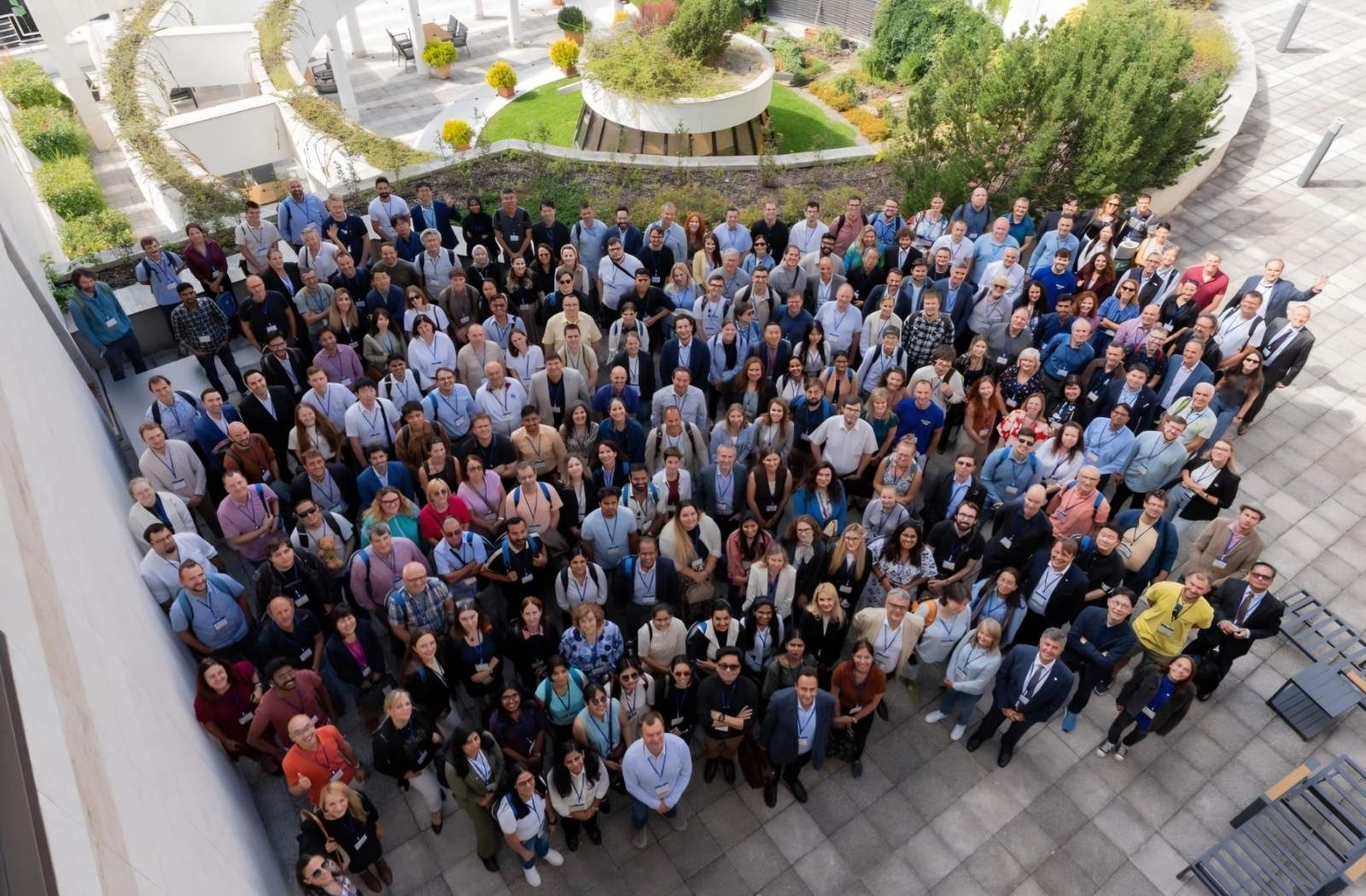 Our team was very delighted to take part in International Symposium "The MXene Frontier: Transformative Nanomaterials Shaping the Future" – the largest MXene event in Europe this year!
Our team was very delighted to take part in International Symposium "The MXene Frontier: Transformative Nanomaterials Shaping the Future" – the largest MXene event in Europe this year!  Last Call! Have you submitted your abstract for IEEE NAP-2025 yet? Join us at the International Symposium on "The MXene Frontier: Transformative Nanomaterials Shaping the Future" – the largest MXene-focused conference in Europe this year! Final Submission Deadline: May 15, 2025. Don’t miss this exclusive opportunity to showcase your research and engage with world leaders in the MXene field!
Last Call! Have you submitted your abstract for IEEE NAP-2025 yet? Join us at the International Symposium on "The MXene Frontier: Transformative Nanomaterials Shaping the Future" – the largest MXene-focused conference in Europe this year! Final Submission Deadline: May 15, 2025. Don’t miss this exclusive opportunity to showcase your research and engage with world leaders in the MXene field! We are excited to announce the publication of latest review article on MXenes in Healthcare. This comprehensive review explores the groundbreaking role of MXenes—an emerging class of 2D materials—in revolutionizing the fields of medical diagnostics and therapeutics. Read the full article here: https://doi.org/10.1039/D4NR04853A.
We are excited to announce the publication of latest review article on MXenes in Healthcare. This comprehensive review explores the groundbreaking role of MXenes—an emerging class of 2D materials—in revolutionizing the fields of medical diagnostics and therapeutics. Read the full article here: https://doi.org/10.1039/D4NR04853A. Congratulations and thank you to our collaborators from TU Wien and CEST for very interesting work and making it published! In this work, an upscalable electrochemical MXene synthesis is presented. Yields of up to 60% electrochemical MXene (EC-MXene) with no byproducts from a single exfoliation cycle are achieved.
Congratulations and thank you to our collaborators from TU Wien and CEST for very interesting work and making it published! In this work, an upscalable electrochemical MXene synthesis is presented. Yields of up to 60% electrochemical MXene (EC-MXene) with no byproducts from a single exfoliation cycle are achieved. Congratulations to all collaborators with this interesting joint work!
Congratulations to all collaborators with this interesting joint work!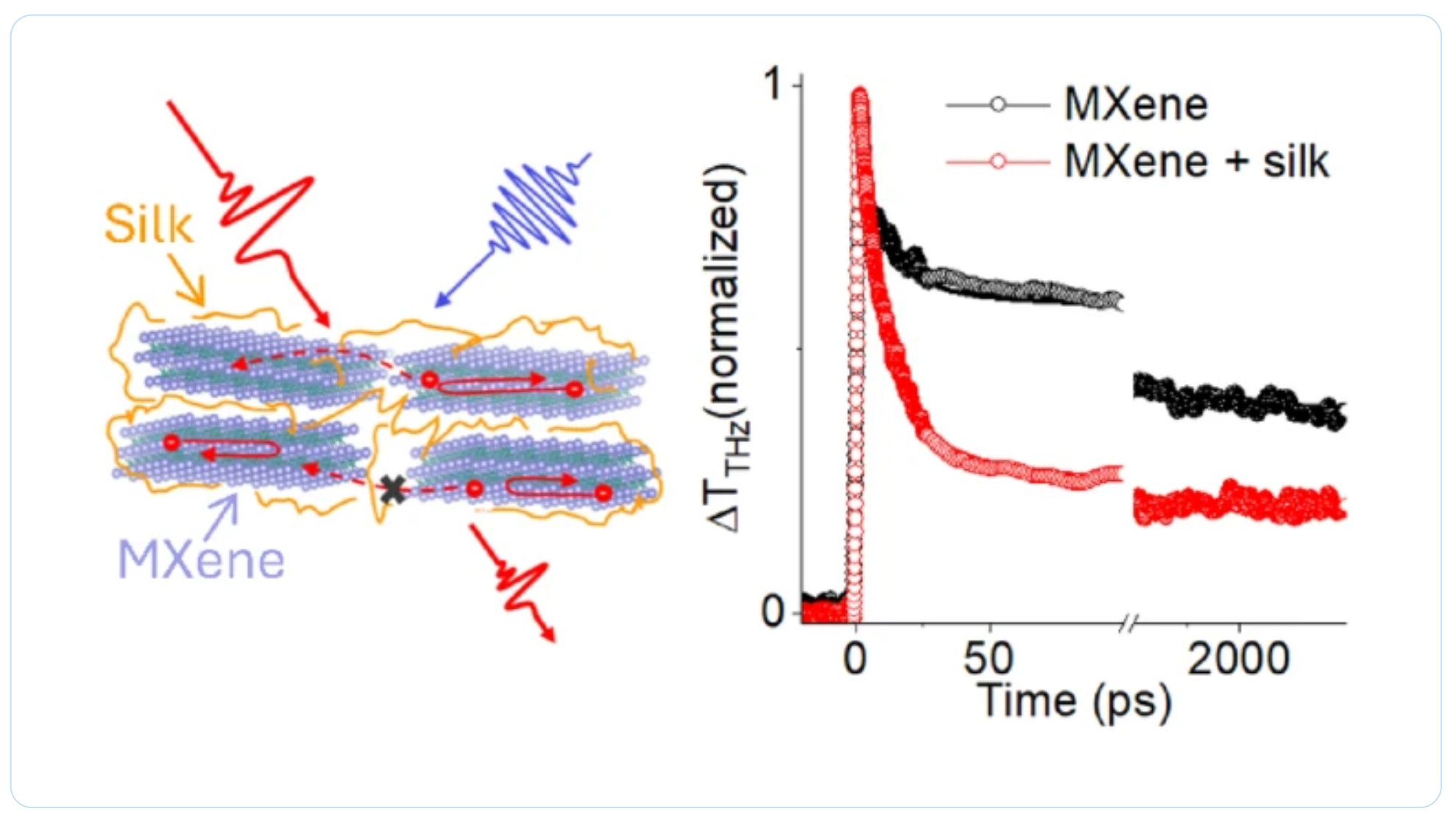 Thank you to our collaborators for the amazing joint work recently published in Graphene and 2D Nanomaterials about MXene–silk fibroin composite films aiming to develop materials with tunable electronic and thermal properties
Thank you to our collaborators for the amazing joint work recently published in Graphene and 2D Nanomaterials about MXene–silk fibroin composite films aiming to develop materials with tunable electronic and thermal properties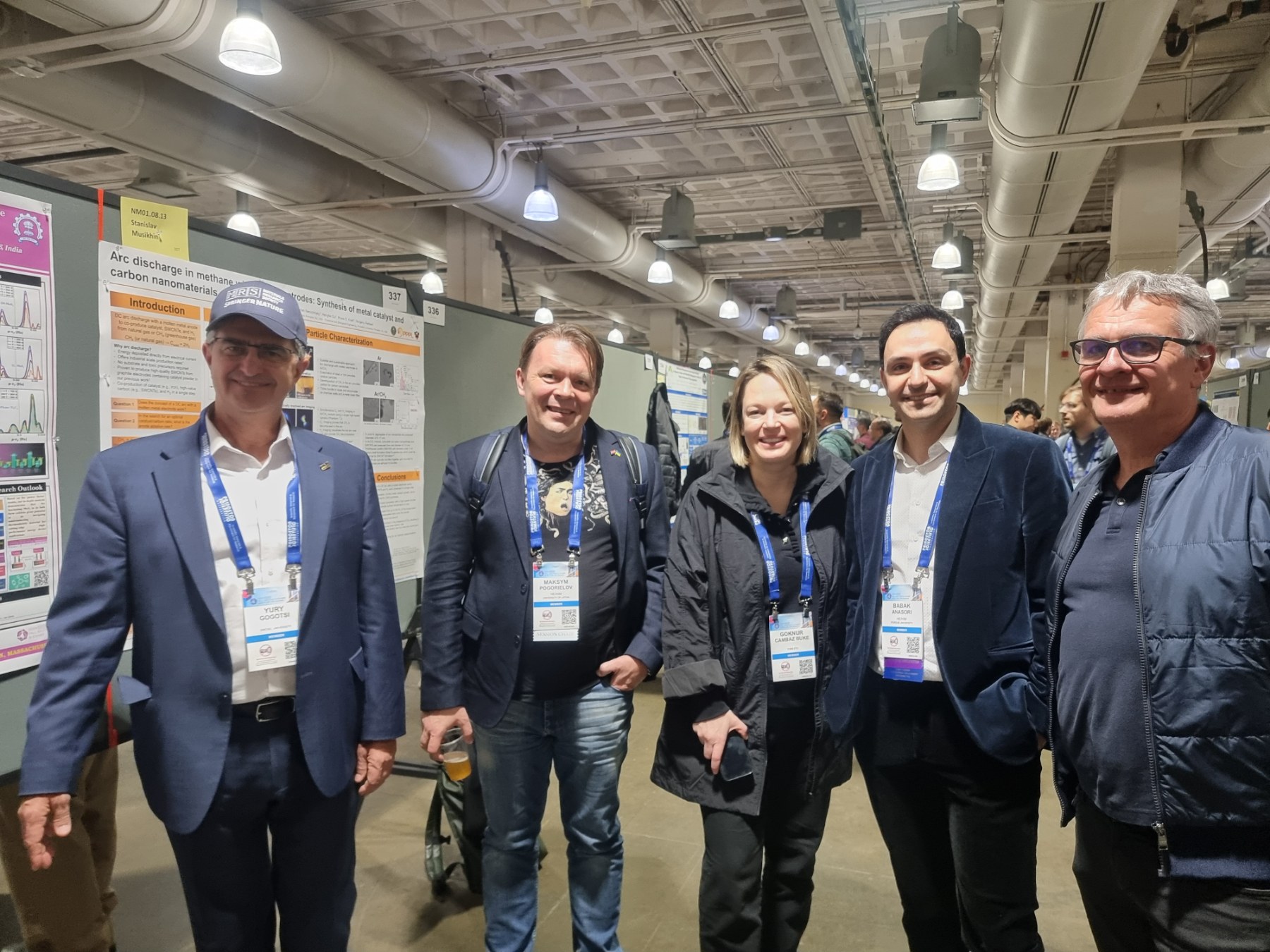 Dr. Oleksiy Gogotsi, director of MRC and Carbon-Ukraine, innovative companies that are among the leaders on the world MXene market, visited 2024 MRS Fall Meeting & Exhibit. together with Dr. Maksym Pogorielov, Head of Advanced Biomaterials and Biophysics Laboratory, University of Latvia.
Dr. Oleksiy Gogotsi, director of MRC and Carbon-Ukraine, innovative companies that are among the leaders on the world MXene market, visited 2024 MRS Fall Meeting & Exhibit. together with Dr. Maksym Pogorielov, Head of Advanced Biomaterials and Biophysics Laboratory, University of Latvia.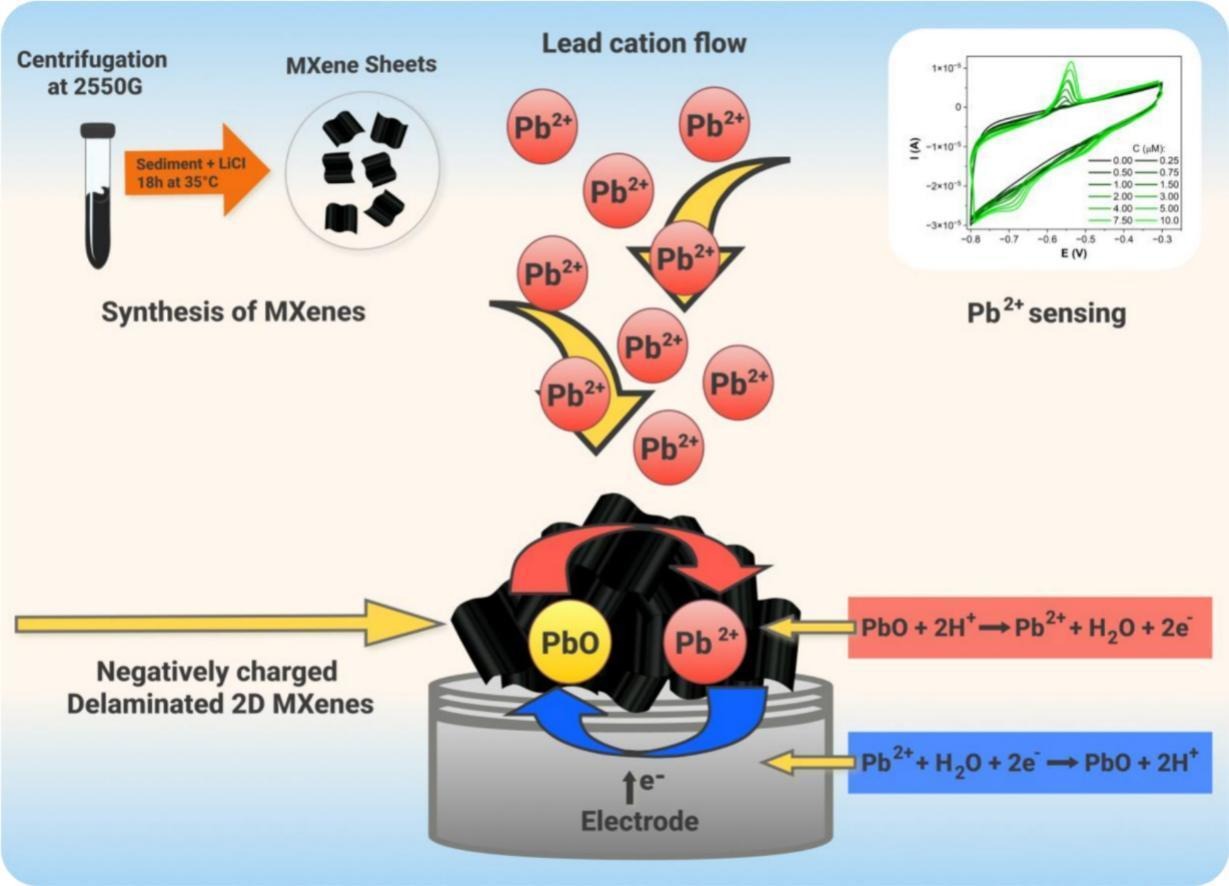
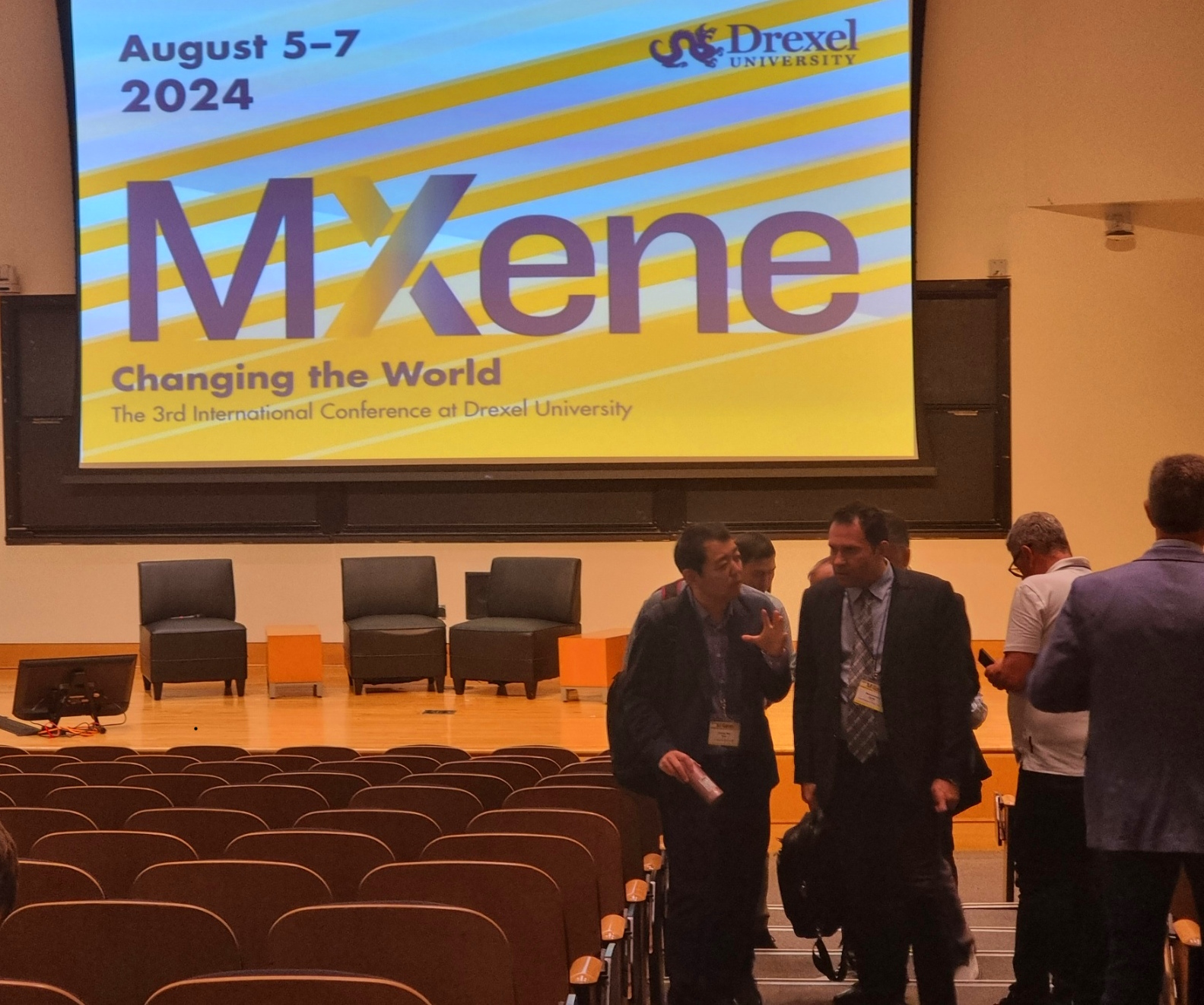 MRC and Carbon-Ukraine team visited the 3rd International MXene conference held at Drexel University on August 5-8, 2024. Conference brought together the best reserchers and leading experts on MXene field.
MRC and Carbon-Ukraine team visited the 3rd International MXene conference held at Drexel University on August 5-8, 2024. Conference brought together the best reserchers and leading experts on MXene field. 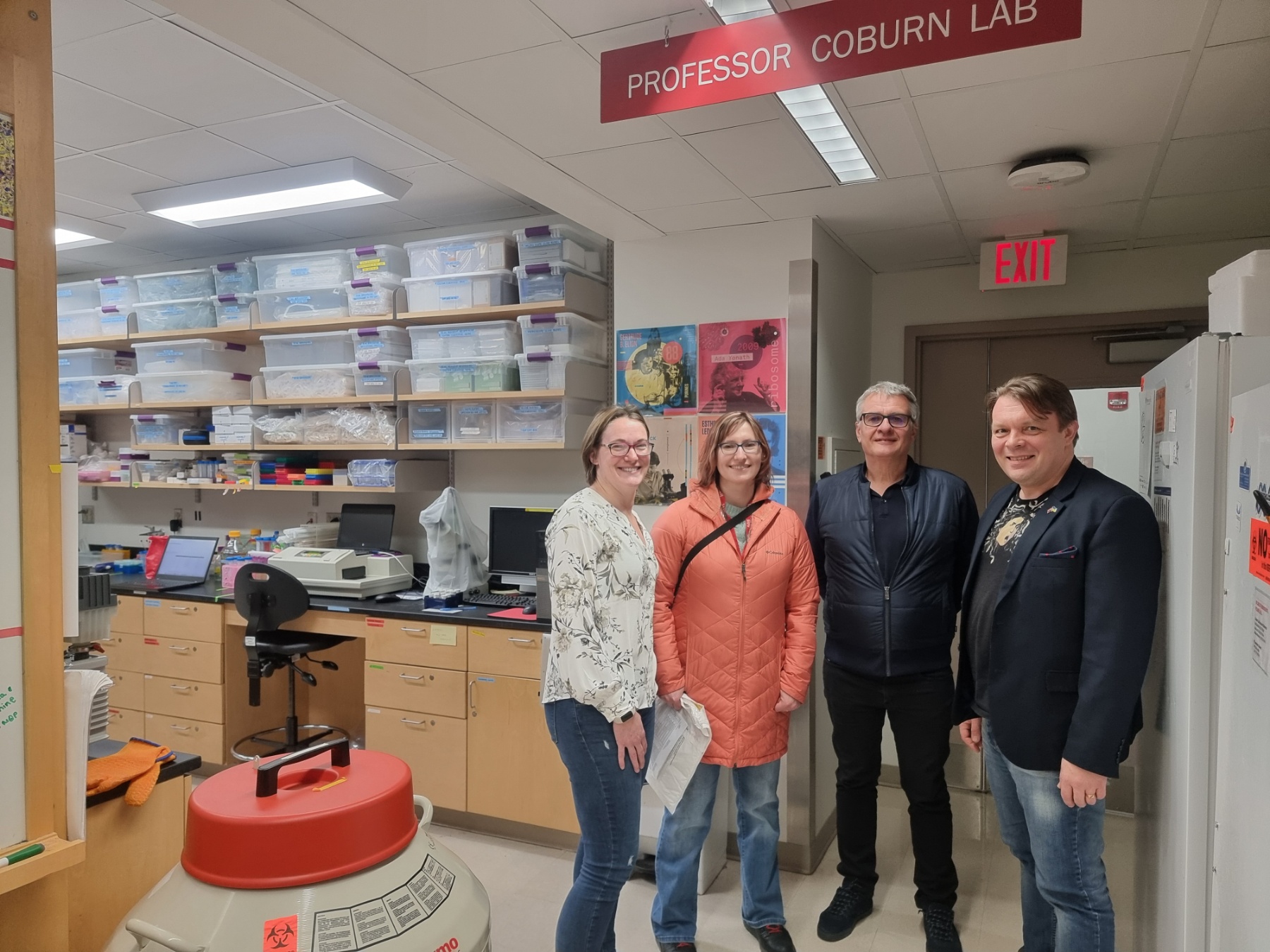
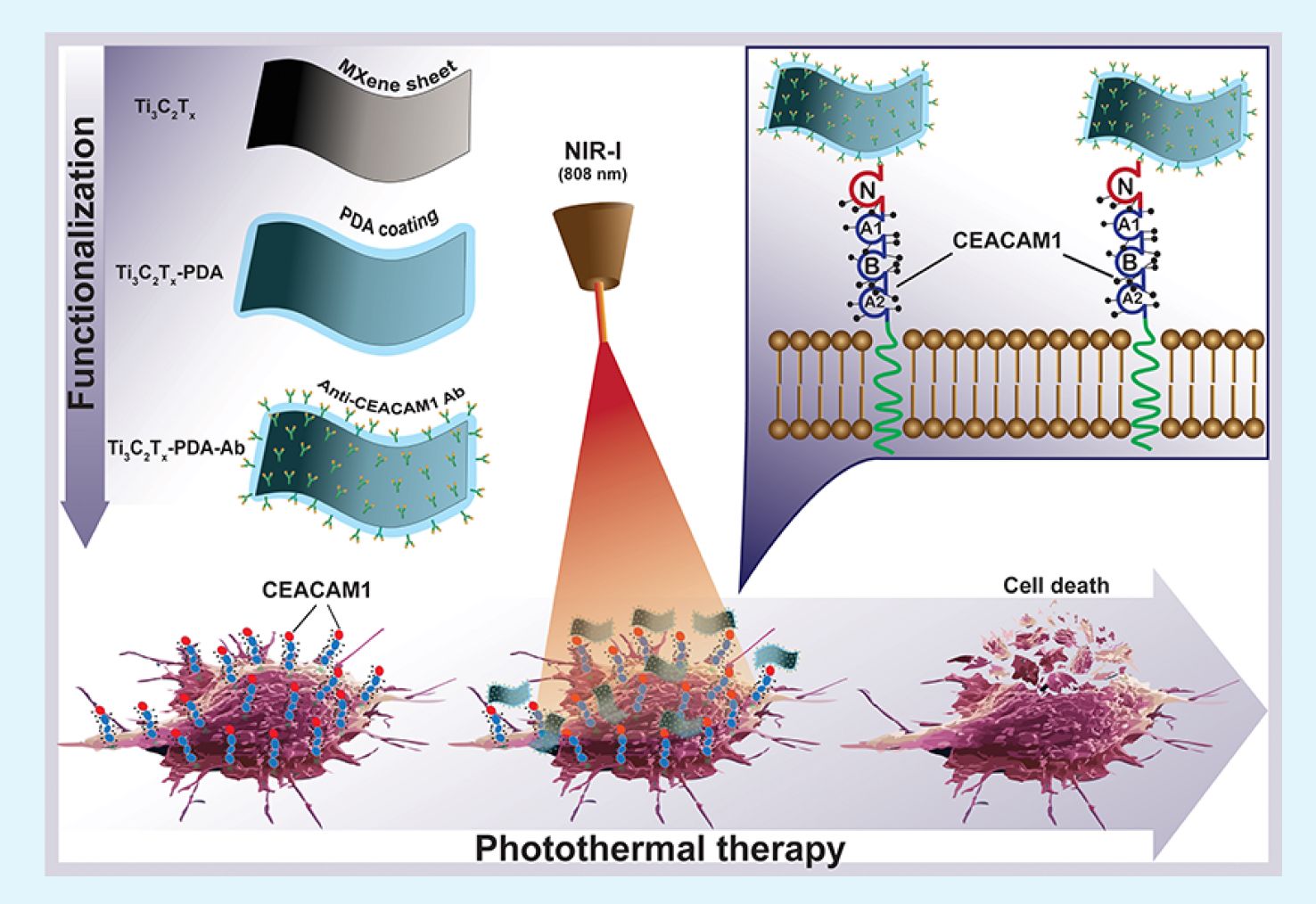 Together with colleagues from the University of Latvia, MRC/Carbone Ukraine, Adam Mickiewicz University, University Clinic Essen, and others, we have developed a novel concept involving the binding of antibodies to MXenes. In our research, we utilized anti-CEACAM1 antibodies to develop targeted photo-thermal therapy for melanoma (in vitro), paving the way for future in vivo studies and clinical trials. For the first time, we demonstrate the feasibility of delivering MXenes specifically targeted to melanoma cells, enabling the effective ablation of cancer cells under near-infrared (NIR) light. This new technique opens up vast potential for the application of MXenes in cancer treatment, diagnostics, drug delivery, and many other medical purposes.
Together with colleagues from the University of Latvia, MRC/Carbone Ukraine, Adam Mickiewicz University, University Clinic Essen, and others, we have developed a novel concept involving the binding of antibodies to MXenes. In our research, we utilized anti-CEACAM1 antibodies to develop targeted photo-thermal therapy for melanoma (in vitro), paving the way for future in vivo studies and clinical trials. For the first time, we demonstrate the feasibility of delivering MXenes specifically targeted to melanoma cells, enabling the effective ablation of cancer cells under near-infrared (NIR) light. This new technique opens up vast potential for the application of MXenes in cancer treatment, diagnostics, drug delivery, and many other medical purposes.